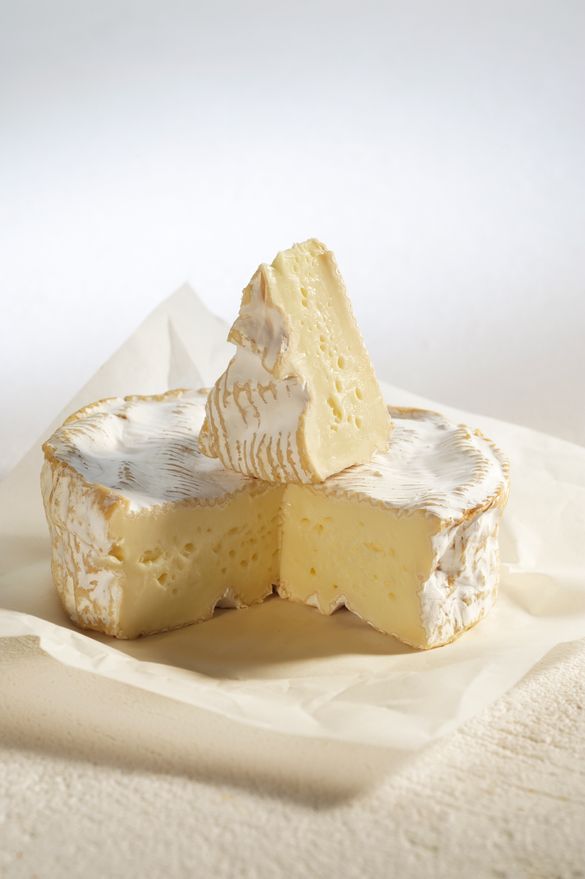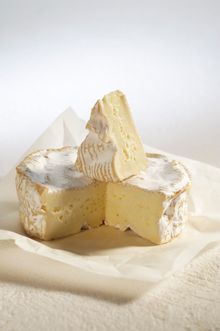 26 Apr 2024
26 Apr 2024
European cheeses have a special place in our hearts and we feared the worst when
scientists advised that two pillars of French gastronomy were on the verge of extinction. However, having
checked with farmers and dairy experts, we can rest assured that Brie and Camembert are here to stay.
Brie and Camembert owe their white rind to a ferment called Penicillium Camemberti.
Recently, there was a scientific report on the overuse of the fungus which led to concerns that white rind cheeses were at risk from disappearing for good. Fortunately for any cheese lover, this is not the case. Thanks to the various strains of the fungus used to make white rind cheeses, there is no shortage on the horizon and there is plenty being stored for safe keeping in laboratories around France, if strains ever do deplete in the future.
Brie and Camembert are world-renowned bloomy rind cheeses. According to a Harris Interactive study
(March 2021), Brie is by far the best-known French cheese in the UK, followed by Camembert.
When it comes to the biggest sellers in Britain over the last 12 months, Brie is the leading French cheese,
with almost half of Britons buying it, a third of Brits have popped Camembert in their shopping baskets.
Both the cheeses are rich in history and below we look at the ways in which Brie and Camembert are truly at
the heart of French gastronomy.
Brie: the king of cheeses
Emperor Charlemagne1 is said to have discovered Brie in the abbey of Reuil-en-Brie on his return from the
conquest of Pavia as far back as 774. He was so impressed by the cheese that he asked for some to be sent
to him every year.
Legend also has it that Louis XVI was arrested in Varennes because he wanted to finish his Brie and red wine
before fleeing, one of his many miscalculations that led to the French Revolution.
1 https://www.history.com/topics/middle-ages/charlemagne
only and do not necessarily reflect those of the European Union or FranceAgriMer. Neither the
European Union nor the granting authority can be held responsible for them.
During the Congress of Vienna in 1815, Charles Maurice of Talleyrand is said to have declared that Brie was
"the king of cheeses”. At the time it sparked a lively debate and it was only after a tasting and vote among
other cheeses that it was crowned as such.
Brie, about 28 km from Paris, has long been a region of cheese production. One of the reasons for its
success is its proximity to the French capital, a long-standing and major consumer centre.
There are many varieties of Brie. These include Brie au Bleu (which has veins of blue mould), Brie de Meaux
PDO, Brie Fermier, Brie de Montereau, Brie de Melun PDO and Brie Noir (an aged type). Brie is a large soft
cheese with cow milk with a very flowery, downy, white and relatively thick rind; the paste on the interior is
creamy next to the rind and generally contains a chalky white centre. It has a slightly salty taste, with
mushroom and milky notes. As the cheese ages it develops stronger, more complex flavours, with fruity,
earthy undertones.
Brie can be enjoyed with both sweet and savoury accompaniments, it is delicious with red grapes, honey
and nuts and on a baguette with tomatoes and salad.
Camembert: a crown jewel of French gastronomy
Local legend states that Camembert was invented by Marie Harel, a French cheesemaker born in 1761. She
is said to have been helped by a priest from Brie who had taken refuge in her home during the French
Revolution.
The arrival of the railways in 1850 made it possible for Camembert cheese to reach Paris and other major
French cities. Marie Harel's grandson even gave his Camembert to the Emperor Napoleon III, who liked it
so much that he took some back to the Tuileries Palace. Forty years later, an engineer called Ridet had the
idea of putting the cheese in a box made from poplar wood, making it even more travel friendly.
This famous soft cheese has become a symbol of French gastronomy and can be made in any region of
France or indeed anywhere in the world. It should not be confused with Camembert de Normandie AOP,
which is of a higher quality and can only be produced in the Normandy region.
Camembert's rind is white and fluffy, sometimes with orange-red spots; the paste is ivory to pale yellow in
colour and may have a chalky white centre. When fully ripened, the paste becomes smooth, soft and shiny,
with very small holes. The taste of Camembert is slightly salty, with pleasant warm milk flavours and a mild
mushroom aroma on the rind at first. The cheese develops more pronounced barnyard flavours as it
matures.
Camembert can be enjoyed simply with a baguette and a glass of red wine. It's also a perfect ingredient for
cooking and is great to use in sauces, cheese soufflés, quiches and melted on toast. For a comforting and
simple sharer, unwrap the cheese and place back into its wooden box, place herbs, thin slices of garlic into
the rind and drizzle with olive oil. Heat the cheese in the oven until the centre becomes soft and gooey and
serve with chunks of baguette, gherkins and a green salad.
Ends
Notes to editors
Photo credit: Virginie Ribaut / CNIEL
About CNIEL:
CNIEL, (Centre National Interprofessionnel de l'Economie Laitière) the French Dairy Interbranch Organization,
is an organisation recognised by French and European public authorities which brings together players from
the French dairy sector (milk producers, cooperatives and private companies, people in mass retail, trade and
institutional catering.).
CNIEL seeks to promote the economic development of the sector, facilitate relations between producers and
processors and promote milk and dairy products.




